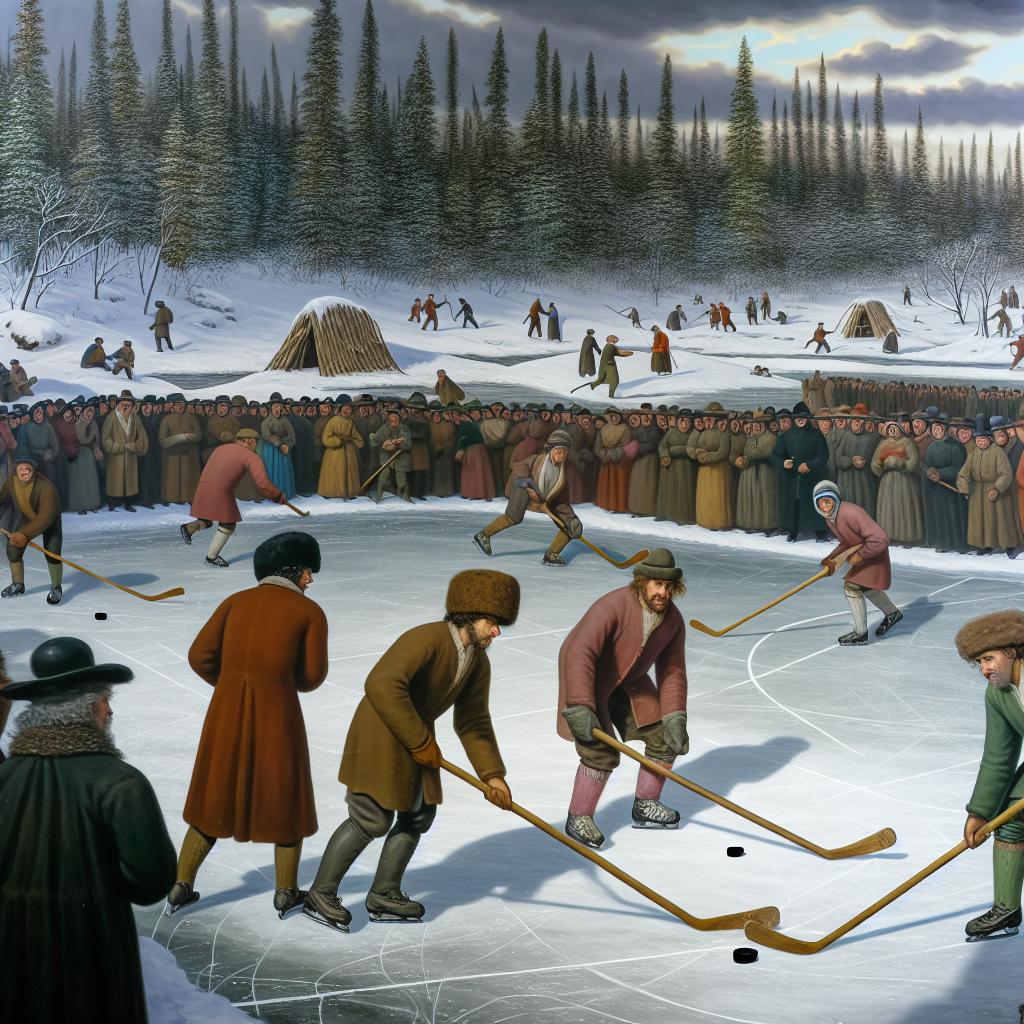Introduction to Ice Hockey Origins
Ice hockey is a high-speed and dynamic sport, widely recognized as one of the most entertaining winter activities. The origins of ice hockey are somewhat murky, with multiple claims about where and when the game precisely began. Understanding the roots of ice hockey requires exploring various historical accounts that have contributed to the sport’s development.
Early Beginnings
The game of ice hockey is believed to have originated from various stick-and-ball games played across Europe for centuries. Historically, these games were played on both fields and ice, with some claiming that the evolution of these games led to what is recognized today as ice hockey.
European Influences
In the 18th and 19th centuries, games involving a curved stick and ball were popular in places such as England, Ireland, and the Netherlands. Bandy, a game developed in England, shares many similarities with today’s ice hockey, involving teams endeavoring to strike a ball into goals on an ice field.
In Northern Europe, particularly in the Netherlands, winter ice skating and games using sticks and balls developed into a pastime that laid the groundwork for ice hockey. The use of frozen canals and lakes during colder months provided ideal surfaces for such games, fostering both competitive and recreational forms. As these regions engaged in trade, travel, and communication, ideas and practices surrounding stick-and-ball games likely traveled too, influencing the evolution of games elsewhere.
Adaptation in Canada
Canada is often credited as the birthplace of modern ice hockey. In the mid-19th century, British soldiers stationed in Nova Scotia adapted field games they were familiar with to ice during the winter months. Historical records suggest that the first documented indoor hockey game was played in 1875 in Montreal. The adaptation included using a puck instead of a ball, which significantly shaped the modern format of the game.
The Montreal game in 1875 set a precedent that transitioned informal and varied forms of the sport to a more standardized and recognized version. This included innovations such as designated playing boundaries, specific game time periods, and the introduction of a referee. These changes allowed for a fairer and more structured competition, which helped the sport gain serious momentum.
The Role of Indigenous Peoples
Indigenous peoples of North America played stick-and-ball games long before European settlers arrived. These games, which varied by region, likely influenced the development of ice hockey. Notably, the Mi’kmaq of Nova Scotia are acknowledged for producing some of the first commercial hockey sticks, indicating their involvement in the sport’s formation.
The intertwining of Indigenous culture with European influence highlights the collaborative foundation of ice hockey. This shared practice of sport among differing cultures in North America paved the way for a new, uniquely Canadian adaptation that would evolve into today’s popular sport.
Coding the Rules
In 1877, several students at McGill University in Montreal established the first set of written rules for ice hockey, known as the McGill Rules. These regulations formalized aspects like team size, the number of periods, and essential game mechanics. This codification was crucial to the sport’s rapid spread across Canada and beyond.
These rules were not just instrumental in popularizing hockey but were also vital in distinguishing it from other similar sports. The McGill Rules provided a framework of consistency that was necessary for organizing competitive leagues and sparking interest at both local and national levels. As a result, ice hockey began to unify communities, bringing people together to both participate in and watch the game.
Factors Influencing the Global Spread of Ice Hockey
Following the establishment of the McGill Rules and the emergence of organized sports leagues, ice hockey found a receptive audience within Canada’s vast landscape, and it was not long before the sport traveled beyond North American borders. Key factors that facilitated its spread included the emigration of Canadians to other countries, promotional tours, and exhibitions by prominent Canadian hockey teams. As Canadians moved to new regions, they took their passion for the game with them, founding clubs and promoting its growth.
Simultaneously, improvements in transportation and communication technologies in the late 19th and early 20th centuries, such as the widespread use of railways and telegraphs, enabled hockey to be exported to other parts of the world more efficiently. Competitions gradually arose outside of North America, making hockey not just a national pastime in Canada, but also an international phenomenon.
Cultural and Social Impact
Ice hockey’s journey from local rinks to international arenas has culturally and socially impacted many nations. It has generated a sense of identity and community in regions where it is played, serving as a national symbol of pride and bringing diverse populations together. Moreover, it has influenced and been influenced by popular culture through films, music, literature, and fashion, contributing to its enduring legacy and integration into the global sports arena.
In communities, hockey serves as a platform for social interaction, providing individuals with opportunities for teamwork, discipline, and improved physical health. Additionally, the sport’s growth has seen significant contributions from athletes of various backgrounds, promoting multiculturalism and social cohesion.
Conclusion
While the precise origins of ice hockey are difficult to pin down definitively, the sport’s evolution is a fascinating tale of cultural exchange and adaptation. Its growth from European and Indigenous games to a globally recognized sport highlights its diverse heritage. As the game continues to evolve, it remains ingrained in the cultural fabric of many nations, notably Canada, where it holds a place of national pride. Understanding the origins of ice hockey helps to appreciate the rich history that has shaped this thrilling game.
Whether enjoyed as a professional sport, a recreational activity, or a cultural spectacle, ice hockey’s deep-rooted history spans continents and centuries, reflecting a blend of tradition, innovation, and collaboration across different societies. As we look to its future, ice hockey’s story continues to be written, building on a foundation of shared human experience and passion for the sport.
